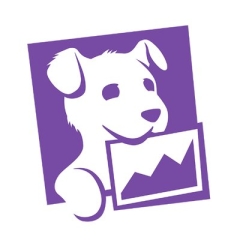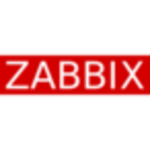What is our primary use case?
Our main use case for Datadog includes monitoring and logs, custom metrics, as well as utilizing the APM feature and synthetic tests in our day-to-day operations.
A quick specific example of how Datadog helps with our monitoring and logs comes from all our applications sending logs into Datadog for troubleshooting purposes, with alerts built on top of the logs, and for custom metrics, we send our metrics from the applications via Prometheus to Datadog, building alerts on top of those as well, sometimes sending critical alerts directly to PagerDuty.
We generally have monitors and alerts set up for our applications and specifically rely on them to check our critical business units, such as databases; in GCP, we use Cloud SQL, in AWS, we use RDS, and we also monitor Scylla databases and EC2 instances running Kafka services, which we heavily depend upon. Recently, we migrated from US one to US five, which was a significant shift, requiring us to migrate all alerts and monitors to US five and validate their functionality in the new site.
What is most valuable?
The best feature Datadog offers is its user-intuitive interface, making it very easy to track logs and custom metrics. We also appreciate the APM feature, which has helped reduce our log volumes and custom metric volumes, allowing us to turn off some custom metrics.
We recently learned how tags contribute to custom metrics volume, which led us to exclude certain tags to further reduce that volume, and we implement log indexing and exclusion filters, leaving us with much to explore and optimize in our use of Datadog as our major observability platform.
What needs improvement?
Regarding metrics showing our improvements, the MTTR has been reduced by about 40% after integrating Datadog with PagerDuty, and we've seen our costs significantly drop in the most recent renewal after three years' contract.
Operationally, we spend about 30-40% less time correlating logs and metrics across services, while potential areas for improvement in Datadog include its integration depth and providing more flexible pricing models for large metric and log volumes.
I would suggest having an external Slack channel for urgent requests, which would enable quicker access to support or a dedicated support team for our needs.
I choose eight because, while we have used Datadog for three years and experienced growth in our business and services, the cost has also increased with the growth in metrics and log volumes, and proactive cost management feedback has not been provided to help manage or budget those rising costs. Thus, I'd like to see more proactive cost management in the future, as the pricing model seems to escalate quickly with increasing metrics ingestion and monitoring across clouds. Datadog is a powerful and reliable observability platform, but there is still room for improvement in cost efficiency and usability at scale.
Regarding pricing, setup costs, and licensing, I find Datadog's pricing model transparent but scaling quickly; the base licensing for host integration is straightforward, but costs can rapidly climb as we add custom metrics and log ingestion, especially in dynamic Kubernetes or multi-cloud environments, with the pricing being moderate to high, and while cost visibility is straightforward, it could become challenging with growing workloads. The upfront setup cost is minimal, mainly involving fine-tuning dashboards, tags, and alerts, making licensing very flexible to enable features as needed.
For how long have I used the solution?
I have been working in my current field for roughly around 10 years, starting my AWS journey about 10 years ago, mainly focused on infrastructure and observability.
Buyer's Guide
Datadog
January 2026
Learn what your peers think about Datadog. Get advice and tips from experienced pros sharing their opinions. Updated: January 2026.
879,768 professionals have used our research since 2012.
What do I think about the stability of the solution?
I believe Datadog is stable.
What do I think about the scalability of the solution?
Datadog's scalability is impressive, as it has the necessary integrations, supports agent-based and cloud-native solutions, and accommodates multi-cloud, multi-region features, making overall performance very good.
How are customer service and support?
Customer support has improved recently with online support available through a portal, allowing for quicker access to help.
How would you rate customer service and support?
Which solution did I use previously and why did I switch?
Previously, we used Splunk SignalFx for a couple of years, switching to Datadog because of Datadog's user-intuitive interface, which was lacking in SignalFx at the time.
What was our ROI?
Datadog has had a significant positive impact on our organization overall, particularly in visibility, reliability, and cost efficiency, allowing us to centralize metrics, logs, and traces across our cloud, moving from reactive to proactive monitoring, with improvements including faster incident detection and resolution, enhanced service reliability, better cost and resource optimization, and shared dashboards providing the engineering and product teams a single source of truth for system health and performance, thus enhancing our overall observability and operational efficiency.
I believe Datadog has delivered more than its value through reduced downtime, faster recovery, and infrastructure optimization; although we sometimes miss critical alerts, overall, it has improved our team's efficiency by maybe 30% less time spent troubleshooting logs and custom metrics while providing measurable ROI through enhanced system reliability, reduced incident costs, and infrastructure spending optimization.
Which other solutions did I evaluate?
We only evaluated SignalFx before choosing Datadog, as Datadog offered simpler scaling, better management, broader integrations, and dashboards, allowing for easier monitoring of our multi-cloud setup.
What other advice do I have?
After reducing log and custom metric volumes, we notice a significant reduction in costs without any performance issues on our end, actually seeing a lot of cost reductions.
I strongly recommend using Datadog, but suggest being proactive about resource usage and tracking anomalies monthly.
I find the interview process okay, although it runs longer than I expected, exceeding the anticipated 10 minutes.
My rating for Datadog is 8 out of 10.
Which deployment model are you using for this solution?
Public Cloud
If public cloud, private cloud, or hybrid cloud, which cloud provider do you use?
Google
Disclosure: My company does not have a business relationship with this vendor other than being a customer.



















